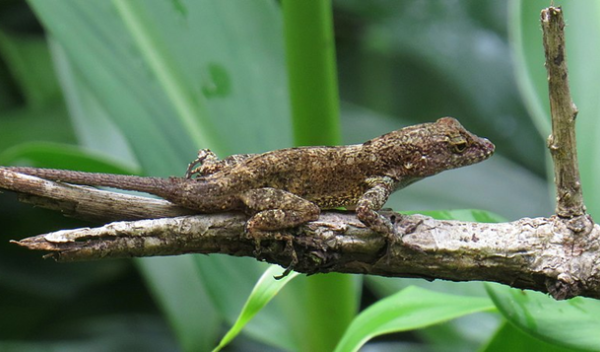Lizards living in different cities have parallel genomic markers when compared to neighboring forest lizards, according to a new study published in Proceedings of the National Academy of Sciences.
The genetic variations linked to urbanization underlie physical differences in the urban lizards, including longer limbs and larger toe pads that show how these lizards have evolved to adapt to city environments.
Urbanization has dramatically transformed landscapes around the world — changing how animals interact with nature, creating “heat islands” with higher temperatures, and hurting local biodiversity. Yet many organisms survive and even thrive in these urban environments, taking advantage of new habitats created by humans.
Researchers supported by the U.S. National Science Foundation studying evolutionary changes in urban species have found that some populations, for example, undergo metabolic changes from new diets or develop an increased tolerance of heat.
“Urbanization impacts roughly two-thirds of the Earth and is expected to continue to intensify, so it’s important to understand how organisms might be adapting to changing environments,” said Kristin Winchell of New York University, the study’s first author. “In many ways, cities provide us with natural laboratories for studying adaptive change, as we can compare urban populations with their non-urban counterparts to see how they respond to similar stressors and pressures over short periods of time.”
Anolis cristatellus lizards — a small-bodied species also known as the Puerto Rican crested anole — are commonly found in both urban and forested areas of Puerto Rico. Prior studies by Winchell and her colleagues found that urban A. cristatellus have evolved certain traits to live in cities: They have larger toe pads with more specialized scales that allow them to cling to smooth surfaces like walls and glass and have longer limbs that help them sprint across open areas.
The researchers looked at 96 A. cristatellus lizards from three regions of Puerto Rico — San Juan, Arecibo, and Mayagüez — comparing lizards living in urban centers with those living in forests surrounding each city.
The scientists confirmed that the lizard populations in the three regions were genetically distinct from one another, so any similarities they found among lizards across the three cities could be attributed to urbanization. They then measured their toe pads and legs and found that urban lizards had significantly longer limbs and larger toe pads with more specialized scales on their toes, supporting their earlier research that these traits have evolved to enable urban lizards to thrive in cities.
Source: News Release

